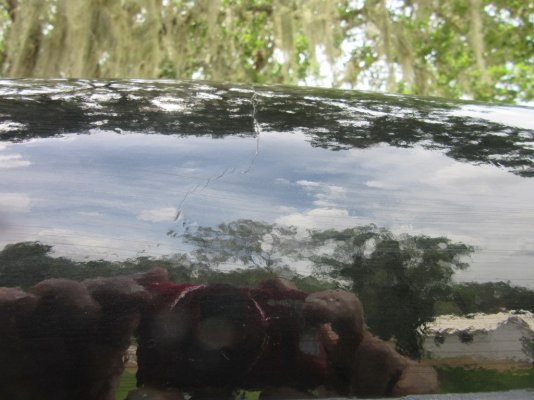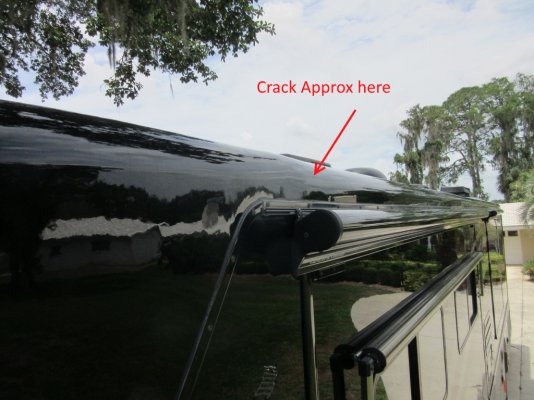You are using an out of date browser. It may not display this or other websites correctly.
You should upgrade or use an alternative browser.
You should upgrade or use an alternative browser.
Crack in Fiberglass
- Thread starter timjet
- Start date
The friendliest place on the web for anyone with an RV or an interest in RVing!
If you have answers, please help by responding to the unanswered posts.
If you have answers, please help by responding to the unanswered posts.
Gary RV_Wizard
Site Team
I'd put a thin bead of clear caulk on it to make sure no water can seep in, but the worry is what caused it in the first place. If nothing hit it (like a falling tree limb), then the possibility exists of stress from some flaw underneath. I'd keep a close eye on it to see if it gets worse.
The tubes of sealer they sell for the seams on an aquarium are a convenient way to lay tiny beads of clear sealer., but any clear sealer will work.
The tubes of sealer they sell for the seams on an aquarium are a convenient way to lay tiny beads of clear sealer., but any clear sealer will work.
Rene T
Site Team
Drill a small hole (maybe 1/8") on each end of the crack. This may stop it from betting bigger. Then seal it.
NY_Dutch
Well-known member
Before drilling any holes, I'd make sure it's actually a crack in the fiberglass and not just a cosmetic fracture of the gel coat from a tree limb, etc. The gel coat can be repaired relatively easily.
beaverfever
Well-known member
- Joined
- Feb 3, 2011
- Posts
- 558
i agree with ny_dutch i would swing it by a body shop that does fiberglass or a boat repair shop and get a professional opinion before drilling holes.
Gary RV_Wizard
Site Team
That looks to me like the result of an object striking the fiberglass (compression crack) rather than a bend or internal stress, so I doubt if it will "run" any further. And yes, it is probably just in the surface (gel coat). I'd still seal it to be sure there is no seepage, though.
If you decide to drill a crack-stop hole at the ends, you MUST seal the hole afterward to keep water out. The size of the hole is relative to the width of the crack and should be slightly larger. Sometimes on a compression crack it is hard to determine just where it ends and how wide it really is - it is sometimes a mushed-in depression rather than a defined crack. That type doesn't typically crack further.
If you decide to drill a crack-stop hole at the ends, you MUST seal the hole afterward to keep water out. The size of the hole is relative to the width of the crack and should be slightly larger. Sometimes on a compression crack it is hard to determine just where it ends and how wide it really is - it is sometimes a mushed-in depression rather than a defined crack. That type doesn't typically crack further.
Larry N.
Well-known member
Drill a small hole (maybe 1/8") on each end of the crack. This may stop it from betting bigger. Then seal it.
In the picture, it appears to me that you'd need a LOT of stop-drill holes, that is, there's not just one end. Or maybe I miss something. But I'd agree that other methods are more desirable in this case.


